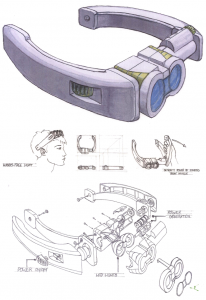I survived Sandy‘s visit, but a week without power has certainly changed the way I think about my mobile devices. As everybody knows, our devices get exponentially more powerful every year (this is called Moore’s Law, though many smart people do not think that growth will continue at this rate). However, the efficiency of batteries has not been increasing in a comparable fashion. That’s why my old dumb phone could go days without plugging in, while an iPhone runs crying to its charging dock every 8 hours. New devices are designed for the best possible world where power is always available. My experience during Sandy has showed me that this is a dangerous way to think. So, two ideas to consider:
First, we could change the way mobile devices treat power. All devices should have an “extreme” power conservation mode. There is no reason why I shouldn’t be able to set my SmartPhone to a mode that will maximize my ability to send and receive emergency calls and text, but suspend all other functions. Also, we might think about better ways for devices to communicate the consequences of user decisions on battery life. For example, in “cautious” power conservation mode, the phone can let the user know that (say) turning on the GPS for 15 minutes will take the phone from 45% power to 40% power. Or that trying to maintain signal in the subway will significantly drain batteries. As with the way that giving energy use feedback in Hybrid cars changed the way people drive, I think this will quickly change the way people use their phones in power-scarce situations.

My conception of what a handcrank flashlight might look if it was available in a more convenient head-mounted model.
Second, we could introduce redundant ways of powering up one’s devices. Over this crisis, I came to rely on my handcrank LED flashlight that I got as conference swag at some point. I want more things like it! I want to be able to charge all my devices with some combination of cranking, walking, pedaling, and whatever. Can I harness the power of the wind during a tornado? Emergency solar? One of my coworkers had the idea of harnessing power from more resilient home infrastructure, such as a gas stove. What about running water? A lot of these devices already exist but seems to be quite inefficient and prohibitively expensive.
The point is that our mobile devices are no longer a luxury, they are a necessity to keep us safe and connected. I think it is important to think about what happens when everything else fails.

